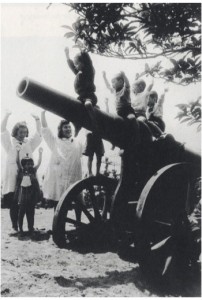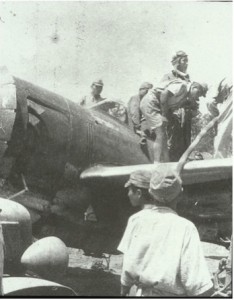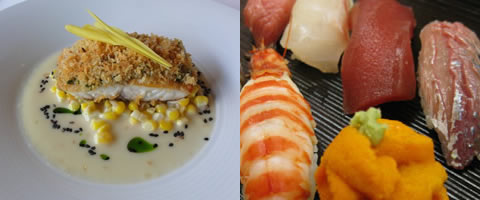Current Research
Samuel Yamashita has been working on four research projects. He has written what German historians call an alltagsgeschichte, “a history of everyday life,” of wartime Japan. He became interested in this topic after presenting his paper “Confucianism and the Japanese State, 1904–1945” at a conference on Confucianism and modernity held at the American Academy of Arts and Sciences in Cambridge in 1991. Using the ethics textbooks issued by the Japanese Ministry of Education between 1904 and 1945, he reconstructed the official ideal of the “good Japanese” and showed how this conception changed between 1910 and World War II. His paper was included in the conference volume edited by Wei-ming Tu, Confucian Traditions in East Asian Modernity (Harvard University Press, 1996). Later he began wondering whether the general population in the Japanese home islands and colonies actually embraced this conception, and his reflections on this question appear in “War and Ethnicity in the Study of Modern Japan,” in Japan in the World / The World in Japan (University of Michigan Press, 2001). He began to explore the responses to wartime institutions, policies, and ideologies found in the diaries and letters written by ordinary Japanese servicemen, civilians, women, children, and colonial subjects. These materials revealed not only an unexpected variety of responses to the wartime government and its institutions and policies but also offered insights into how the national government and local authorities were able to mobilize the entire home-front population for the war effort. These responses were the focus of Daily Life in Wartime Japan, 1940-1945 (University Press of Kansas, 2015), a history of everyday life in wartime Japan that was recently published. His translations of eight of the diaries he collected appear in Leaves from an Autumn of Emergencies: Selections from the Wartime Diaries of Ordinary Japanese (University of Hawai’i Press, 2005). He continues to collect and read the wartime diaries and letters of ordinary Japanese and Japanese colonial subjects and hopes to expand this project with the help of other scholars and translators to include the wartime writings of other Asians. His latest publication, “Popular Japanese Responses to the Pearl Harbor Attack, December 7, 1941-January 8, 1942,” was included in Beth Bailey and David Farber, eds., Beyond Pearl Harbor: A Pacific History (University Press of Kansas, 2019).
For more than two decades, Yamashita also has been collecting the diaries and “last letters” of kamikaze pilots and has written several papers on this fascinating phenomenon. One of these—“Kamikaze: Religion in the Diaries of Imperial Japanese Army and Navy Special Attack Pilots”—examines the pilots’ religious views and can be found in Madelon DeKeizer, ed., Religie: Godsdienst en geweld in de tweintigste eeuw (Walburgpers 2006). His paper “Constructing the ‘Nation’ in the ‘Last Letters’ of Special Attack Pilots,” which he presented at the annual meeting of the American Historical Association in 2006, explores the ways in which the “nation” was configured in the “last letters” of the special attack pilots; and his paper “Learning to Die: The Training of Kamikaze Pilots,” which he presented at the University of North Carolina at Chapel Hill in September 2007, analyzes the rhetoric and training methods used to make army and navy pilots willing to sacrifice themselves for their country. The latter was included in Daily Life in Wartime Japan, 1940-1945 (University Press of Kansas, 2015).
Food is the subject of Yamashita’s two new projects: he is writing what will be the first history of Pacific Rim fusion cuisine, and he chose to begin with Hawai’i Regional Cuisine. He has been traveling to Hawai’i to interview the founding chefs of this culinary movement, as well as food writers, planners, businessmen, growers, fishermen, ranchers and aquaculturists. “The Significance of Hawai’i Regional Cuisine in Post-colonial Hawai’i” was included in in Robert Ku, Anita Mannur, Martin F. Manalansan IV, eds., Eating Asian America: A Food Studies Reader (NYU, 2013), 98-122, and Hawai’i Regional Cuisine: The Food Movement That Changed the Way Hawai’i Eats appeared in the University of Hawai’i Press’s Food in Asia and the Pacific series in 2019. He is currently exploring the impact of Asian cuisine on fine dining along the Pacific Rim, and his first piece on this topic—”The ‘Japanese Turn’ in Fine Dining in the United States, 1980-2020″—was published in the summer 2020 issue of Gastronomica.
Finally, he is writing a history of Japanese cuisine from prehistory to the present. “The Food Problem of Evacuated Children in Wartime Japan, 1942-1945,” his first foray into Japanese food history, appeared in Kataryzna Cwiertka, ed., Food in Zones of Conflict (Ashgate, 2013), 131-148, and chapters 2 and 5 of Daily Life in Wartime Japan, 1940-1945 deal with the food situation on the home front.


